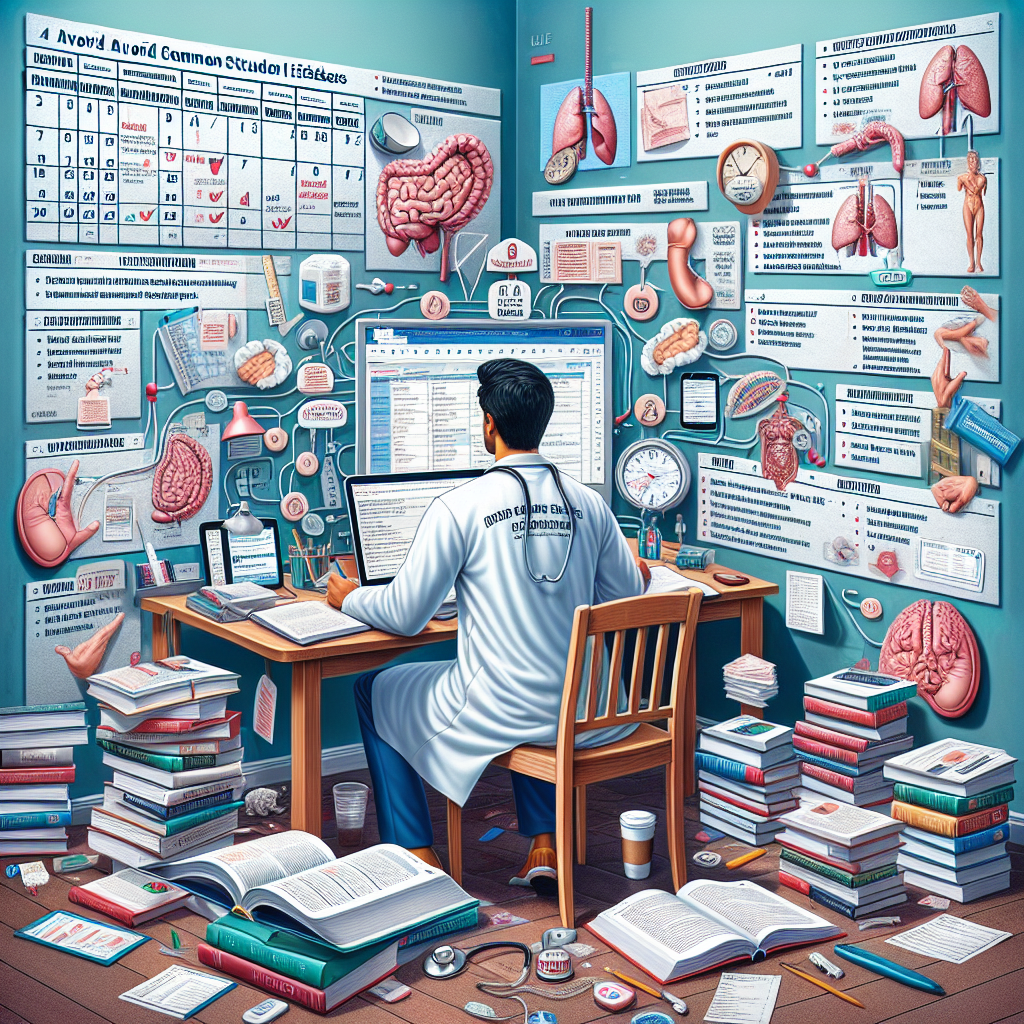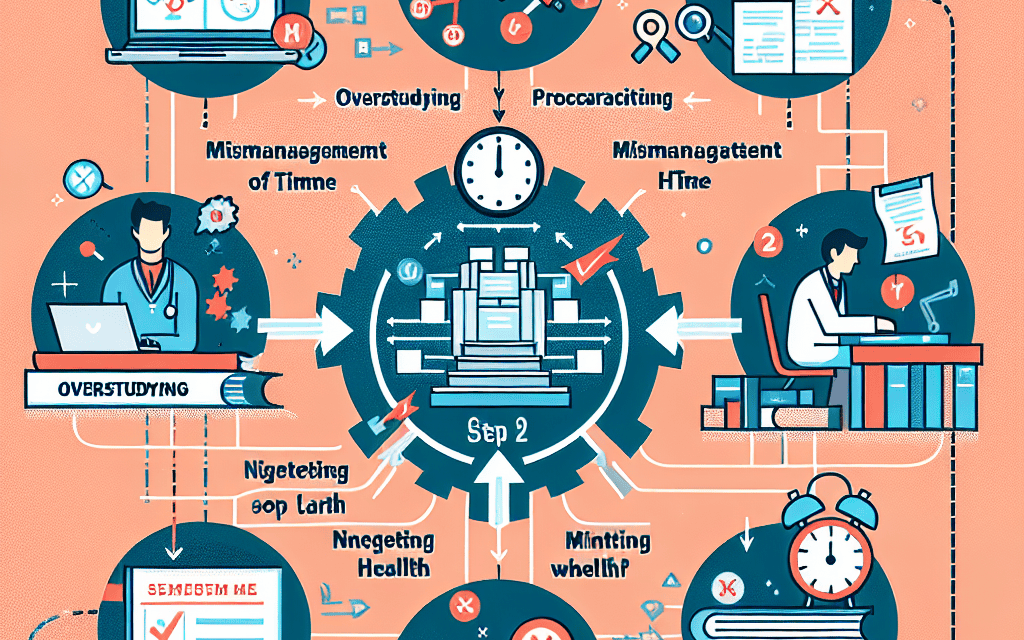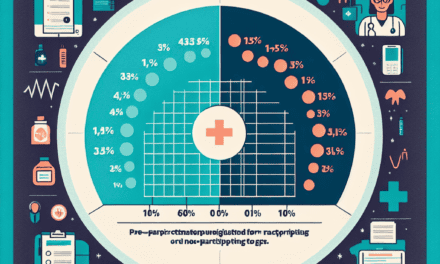Avoiding Common Mistakes in USMLE Step 2 CK Prep

The United States Medical Licensing Examination (USMLE) Step 2 Clinical Knowledge (CK) is a critical milestone for medical students and graduates aiming to practice medicine in the United States. This exam assesses the medical knowledge and clinical skills necessary for patient care. Preparing for Step 2 CK can be daunting, and many candidates make common mistakes that can hinder their performance. This article explores these pitfalls and provides strategies to avoid them, ensuring a successful exam experience.
Understanding the Exam Format and Content
One of the most common mistakes candidates make is not fully understanding the format and content of the USMLE Step 2 CK. This section will delve into the exam’s structure, the types of questions asked, and the subjects covered, providing a comprehensive overview to help candidates prepare effectively.
Exam Structure
The USMLE Step 2 CK is a one-day examination divided into eight 60-minute blocks, administered in a single 9-hour testing session. Each block contains up to 40 questions, with a total of approximately 318 questions. Understanding this structure is crucial for time management during the exam.
Many candidates underestimate the importance of time management, leading to rushed answers and incomplete sections. To avoid this, practice with timed question blocks to simulate the exam environment. This will help you develop a rhythm and ensure you can complete each block within the allotted time.
Question Types
The questions on Step 2 CK are primarily multiple-choice, designed to test your ability to apply medical knowledge in clinical scenarios. These questions often include patient vignettes, requiring you to analyze information and make informed decisions.
To excel in these questions, focus on developing strong clinical reasoning skills. Practice with question banks that mimic the style and difficulty of the actual exam. Additionally, review explanations for both correct and incorrect answers to deepen your understanding of the material.
Subject Areas
Step 2 CK covers a wide range of medical disciplines, including internal medicine, surgery, pediatrics, obstetrics and gynecology, psychiatry, and more. Each subject is weighted differently, with internal medicine typically comprising the largest portion of the exam.
To avoid neglecting any subject area, create a study plan that allocates time based on the exam’s content distribution. Prioritize high-yield topics and ensure you have a solid grasp of the fundamentals in each discipline.
Utilizing Official Resources
The National Board of Medical Examiners (NBME) provides official resources, including practice exams and content outlines, to help candidates prepare for Step 2 CK. These resources offer valuable insights into the exam’s format and content.
Many candidates overlook these resources, opting instead for third-party materials. While supplementary resources can be beneficial, it’s essential to incorporate official materials into your study plan. They provide a benchmark for the types of questions you can expect on the exam.
Case Study: Time Management Challenges
Consider the case of a candidate who struggled with time management during Step 2 CK. Despite having a strong grasp of the material, they found themselves rushing through the final blocks, leading to careless mistakes. By incorporating timed practice sessions into their study routine, they were able to improve their pacing and achieve a higher score on their second attempt.
Developing a Comprehensive Study Plan
A well-structured study plan is essential for success on Step 2 CK. This section will explore the components of an effective study plan, including goal setting, resource selection, and scheduling, to help candidates maximize their preparation efforts.
Setting Realistic Goals
Before diving into your study plan, it’s crucial to set realistic goals for your Step 2 CK preparation. Consider your target score, the amount of time you have before the exam, and your current level of knowledge.
Many candidates set overly ambitious goals, leading to burnout and frustration. Instead, break down your goals into manageable milestones. For example, aim to complete a certain number of practice questions each week or master specific topics by a set date.
Selecting the Right Resources
With a plethora of study resources available, choosing the right ones can be overwhelming. Popular options include question banks, review books, online courses, and flashcards. Each resource has its strengths and weaknesses, so it’s essential to select those that align with your learning style and needs.
- Question Banks: UWorld and Kaplan are widely regarded as top question banks for Step 2 CK. They offer extensive question sets with detailed explanations, helping you build clinical reasoning skills.
- Review Books: Books like “First Aid for the USMLE Step 2 CK” and “Master the Boards” provide comprehensive overviews of high-yield topics.
- Online Courses: Platforms like OnlineMedEd offer video lectures and study guides tailored to Step 2 CK content.
- Flashcards: Anki and other flashcard apps can help reinforce key concepts and facts.
To avoid resource overload, select a few high-quality resources and use them consistently throughout your preparation.
Creating a Study Schedule
A well-organized study schedule is crucial for covering all necessary material before the exam. Start by assessing your available study time and dividing it into dedicated blocks for each subject area.
Many candidates make the mistake of cramming all their study sessions into the final weeks before the exam. Instead, spread your study sessions over several months, allowing for regular review and reinforcement of material.
Incorporate regular breaks and rest days into your schedule to prevent burnout. Consistency is key, so aim for a balanced approach that allows for steady progress without overwhelming yourself.
Adapting to Your Learning Style
Every candidate has a unique learning style, and it’s essential to tailor your study plan to suit your preferences. Some individuals learn best through visual aids, while others prefer auditory or kinesthetic methods.
Experiment with different study techniques to identify what works best for you. For example, if you’re a visual learner, incorporate diagrams and flowcharts into your notes. If you prefer auditory learning, consider recording yourself explaining concepts and listening to them during commutes or workouts.
Case Study: Overcoming Resource Overload
Consider the case of a candidate who initially struggled with resource overload. They had accumulated numerous books, question banks, and online courses, leading to confusion and inefficiency. By streamlining their resources and focusing on a select few, they were able to create a more effective study plan and achieve their target score.
Mastering Clinical Reasoning Skills
Clinical reasoning is a critical component of Step 2 CK, as the exam tests your ability to apply medical knowledge in real-world scenarios. This section will explore strategies for developing strong clinical reasoning skills, including practice techniques and case-based learning.
Understanding Clinical Reasoning
Clinical reasoning involves the ability to gather and analyze patient information, generate differential diagnoses, and make informed decisions about patient care. It’s a skill that requires both knowledge and critical thinking.
Many candidates struggle with clinical reasoning because they focus solely on memorizing facts rather than understanding the underlying principles. To avoid this mistake, prioritize comprehension over rote memorization.
Practice with Patient Vignettes
Patient vignettes are a common feature of Step 2 CK questions, requiring you to apply your knowledge to specific clinical scenarios. Practicing with vignettes is an effective way to develop clinical reasoning skills.
Use question banks and practice exams that include patient vignettes to simulate the exam experience. As you work through these questions, focus on identifying key information, generating differential diagnoses, and selecting the most appropriate management plan.
Engage in Case-Based Learning
Case-based learning is an educational approach that uses real or simulated patient cases to teach clinical reasoning. This method encourages active learning and helps you apply theoretical knowledge to practical situations.
Many medical schools incorporate case-based learning into their curricula, but you can also seek out additional resources, such as online case studies or clinical rotations, to enhance your skills.
Reflect on Clinical Experiences
Clinical rotations provide valuable opportunities to develop clinical reasoning skills in real-world settings. During your rotations, take the time to reflect on your experiences and consider how you approached patient care decisions.
Many candidates overlook the importance of reflection, focusing solely on completing tasks. By reflecting on your experiences, you can identify areas for improvement and reinforce your learning.
Case Study: Improving Clinical Reasoning
Consider the case of a candidate who initially struggled with clinical reasoning on practice exams. By incorporating case-based learning and reflection into their study routine, they were able to improve their ability to analyze patient information and make informed decisions, ultimately achieving a higher score on Step 2 CK.
Managing Stress and Avoiding Burnout
Preparing for Step 2 CK can be a stressful experience, and many candidates experience burnout during their preparation. This section will explore strategies for managing stress and maintaining a healthy work-life balance to ensure a successful exam experience.
Recognizing the Signs of Burnout
Burnout is a state of physical and emotional exhaustion that can result from prolonged stress. Common signs include fatigue, irritability, difficulty concentrating, and a lack of motivation.
Many candidates fail to recognize the signs of burnout until it significantly impacts their performance. To avoid this, regularly assess your mental and physical well-being and take proactive steps to address any issues.
Implementing Stress-Reduction Techniques
Incorporating stress-reduction techniques into your daily routine can help you manage stress and prevent burnout. Popular methods include:
- Mindfulness Meditation: Practicing mindfulness meditation can help you stay present and reduce anxiety.
- Exercise: Regular physical activity can improve mood and reduce stress levels.
- Deep Breathing: Deep breathing exercises can help calm your nervous system and reduce tension.
- Time Management: Effective time management can help you balance study and personal life, reducing stress.
Experiment with different techniques to find what works best for you and incorporate them into your daily routine.
Maintaining a Healthy Work-Life Balance
Balancing study and personal life is essential for preventing burnout and maintaining overall well-being. Many candidates make the mistake of neglecting their personal lives in favor of studying, leading to increased stress and decreased motivation.
To maintain a healthy work-life balance, set boundaries between study time and personal time. Schedule regular breaks and leisure activities to recharge and prevent burnout. Remember that taking care of your mental and physical health is just as important as studying for the exam.
Seeking Support from Peers and Mentors
Preparing for Step 2 CK can be an isolating experience, but seeking support from peers and mentors can provide valuable encouragement and guidance. Many candidates benefit from study groups, where they can share resources and discuss challenging topics.
Additionally, mentors can offer insights into effective study strategies and provide emotional support during stressful times. Don’t hesitate to reach out to others for help and advice.
Case Study: Overcoming Burnout
Consider the case of a candidate who experienced burnout during their Step 2 CK preparation. By implementing stress-reduction techniques, seeking support from peers, and prioritizing self-care, they were able to overcome burnout and achieve their target score.
Utilizing Practice Exams Effectively
Practice exams are a valuable tool for assessing your readiness for Step 2 CK and identifying areas for improvement. This section will explore strategies for utilizing practice exams effectively, including timing, review techniques, and performance analysis.
Timing Your Practice Exams
Timing is crucial when it comes to practice exams. Many candidates make the mistake of taking practice exams too early or too late in their preparation. To maximize their effectiveness, schedule practice exams at regular intervals throughout your study plan.
Start with a baseline practice exam to assess your initial knowledge and identify areas for improvement. As you progress, take additional practice exams to track your progress and adjust your study plan accordingly.
Reviewing Practice Exam Results
Reviewing your practice exam results is just as important as taking the exams themselves. Many candidates make the mistake of focusing solely on their scores without analyzing their performance in detail.
After each practice exam, review both correct and incorrect answers to understand the reasoning behind each question. Identify patterns in your mistakes and focus on addressing these areas in your study plan.
Analyzing Performance Trends
Analyzing performance trends over time can provide valuable insights into your strengths and weaknesses. Many candidates overlook this step, missing opportunities for targeted improvement.
Create a performance tracker to monitor your scores and identify trends in specific subject areas or question types. Use this information to adjust your study plan and focus on areas that need improvement.
Simulating Exam Conditions
Simulating exam conditions during practice exams can help you acclimate to the testing environment and improve your time management skills. Many candidates make the mistake of taking practice exams in a relaxed setting, leading to a false sense of preparedness.
To simulate exam conditions, take practice exams in a quiet environment with minimal distractions. Use a timer to adhere to the exam’s time constraints and practice completing each block within the allotted time.
Case Study: Improving Practice Exam Performance
Consider the case of a candidate who initially struggled with practice exams, scoring below their target range. By analyzing their performance trends and focusing on areas of weakness, they were able to improve their scores and gain confidence in their readiness for Step 2 CK.
Conclusion
Preparing for the USMLE Step 2 CK is a challenging but rewarding journey. By understanding the exam format and content, developing a comprehensive study plan, mastering clinical reasoning skills, managing stress, and utilizing practice exams effectively, candidates can avoid common mistakes and achieve success on the exam.
Remember that preparation is a personalized process, and what works for one candidate may not work for another. Stay flexible, adapt your strategies as needed, and prioritize your well-being throughout your preparation. With dedication and perseverance, you can conquer Step 2 CK and take the next step toward your medical career.





